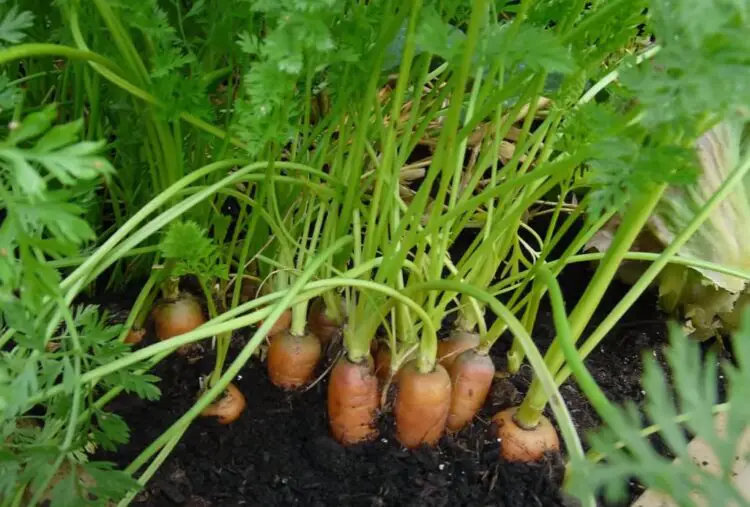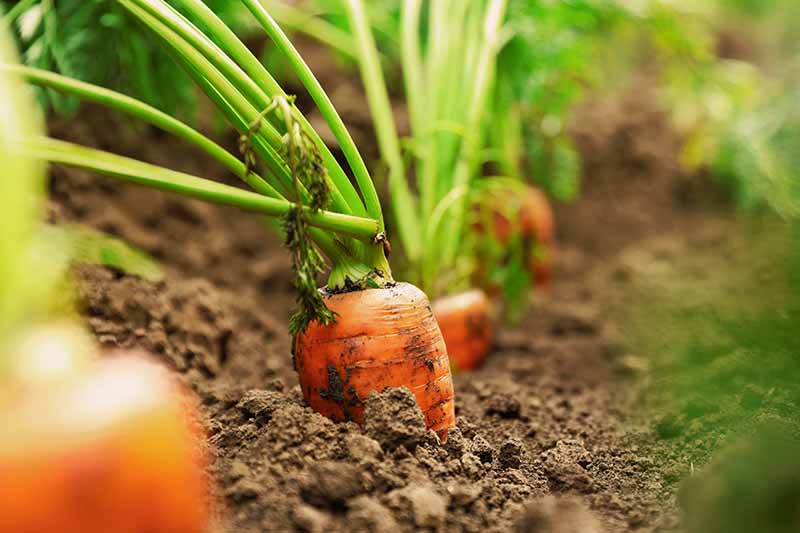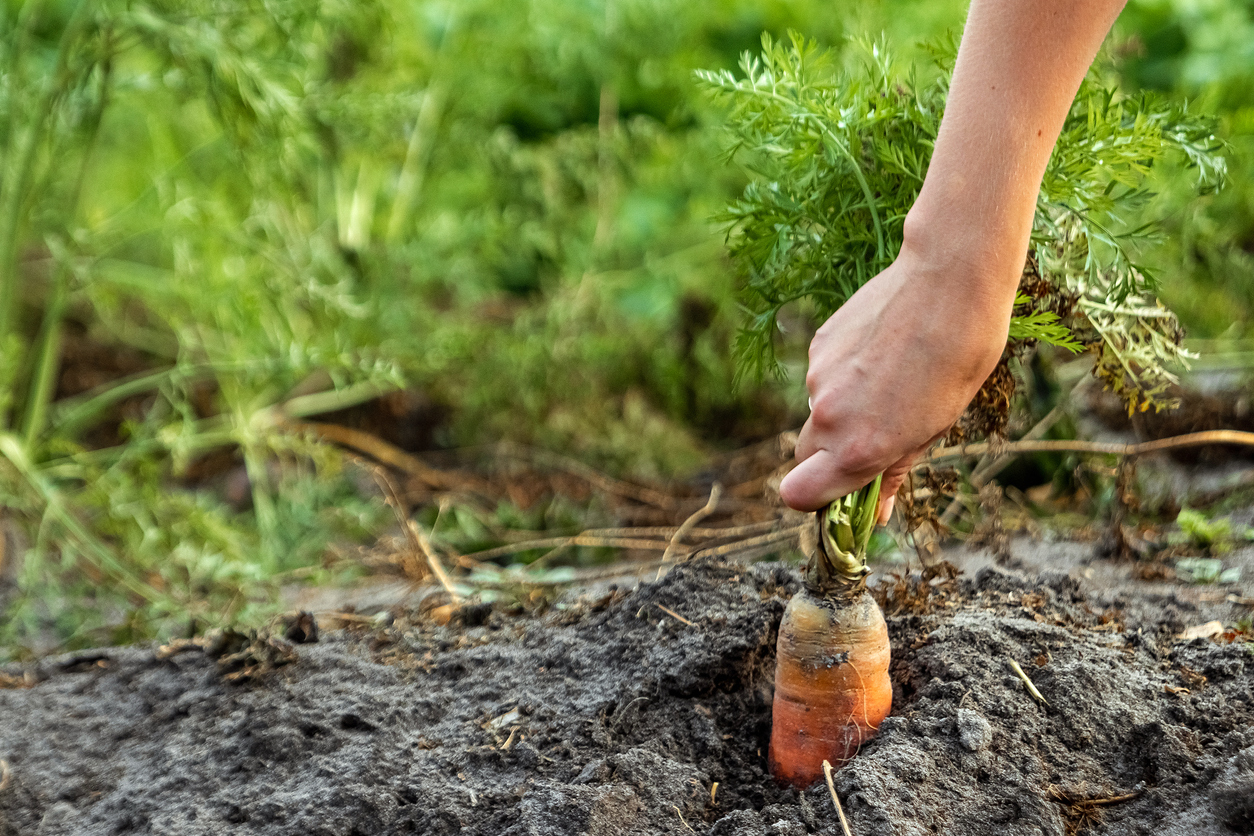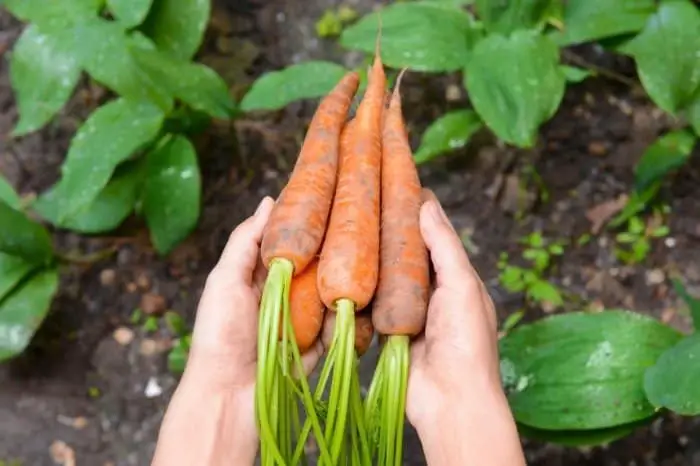Understanding Carrot Growth Stages: The Key to Successful Harvesting
Carrots are a cool-season crop that requires careful planning and attention to detail to achieve optimal growth and flavor. To determine when carrots are ready to pick, it’s essential to understand the different growth stages of this versatile vegetable. Carrot growth can be divided into three main stages: germination, thinning, and maturation.
Germination typically occurs within 1-3 weeks after sowing, depending on weather conditions and soil quality. During this stage, the seeds sprout, and the seedlings develop their first set of leaves. As the seedlings grow, they require thinning to prevent overcrowding and promote healthy development. Thinning involves removing weaker seedlings to allow the stronger ones to receive adequate sunlight, water, and nutrients.
Maturation is the final stage of carrot growth, where the roots reach their full size and flavor. This stage usually occurs 60-70 days after sowing, but can vary depending on the specific carrot variety. To determine if carrots are ready to pick, gardeners can look for visual cues such as the size and color of the roots, the appearance of the green tops, and the condition of the soil. By understanding these growth stages, gardeners can better determine how can you tell when carrots are ready to pick and enjoy a bountiful harvest.
Carrot growth stages are influenced by factors such as weather, climate, and soil quality. Weather conditions, including temperature, moisture, and sunlight, can impact carrot growth and development. For example, carrots grown in cooler temperatures tend to be sweeter and more flavorful, while those grown in warmer temperatures may be more prone to bolting.
By recognizing the different growth stages of carrots and understanding the factors that influence their development, gardeners can optimize their growing conditions and techniques to produce high-quality carrots. This knowledge can also help gardeners avoid common mistakes, such as pulling carrots too early or too late, and ensure a successful harvest.
Visual Cues: What to Look for When Checking for Maturity
When it comes to determining how can you tell when carrots are ready to pick, visual cues play a crucial role. By observing the size, color, and appearance of the roots, as well as the condition of the green tops and soil, gardeners can accurately assess the maturity of their carrots.
The size of the roots is a key indicator of maturity. Most carrot varieties are ready to harvest when they reach a diameter of 1/2 to 1 inch (1-2.5 cm). However, some varieties, such as ‘Parisienne’ or ‘Thumbelina’, may be harvested at a smaller size. To check the size of the roots, gently dig around the plants with a fork, being careful not to damage the roots.
The color of the roots is also an important visual cue. Carrots are typically ready to harvest when they have reached their full color, which can range from orange to yellow, white, or even purple, depending on the variety. Avoid pulling carrots that are still green or pale, as they may not have reached full maturity.
The appearance of the green tops is another indicator of maturity. As carrots mature, the green tops will begin to yellow and fall over. This is a sign that the roots are ready to harvest. However, be careful not to confuse this with the natural yellowing of the tops that occurs as the plants prepare for seed production.
The condition of the soil can also provide clues about the maturity of the carrots. If the soil is dry and cracked, it may be a sign that the carrots are ready to harvest. However, if the soil is waterlogged or compacted, it may be necessary to wait until the soil has dried out before harvesting.
By observing these visual cues, gardeners can accurately determine how can you tell when carrots are ready to pick and enjoy a bountiful harvest of delicious, crunchy carrots.
How to Check for Carrot Maturity: A Step-by-Step Guide
Checking for carrot maturity is a crucial step in determining how can you tell when carrots are ready to pick. By following these simple steps, gardeners can ensure that their carrots are harvested at the optimal time.
Step 1: Gently Dig Around the Plants
Begin by gently digging around the carrot plants with a fork, being careful not to damage the roots. This will help to loosen the soil and make it easier to inspect the roots.
Step 2: Inspect the Roots
Once the soil has been loosened, use your hands or a small tool to carefully inspect the roots. Check for the size, color, and shape of the roots, as well as any signs of damage or disease.
Step 3: Check for Maturity
Use the visual cues discussed earlier to determine if the carrots are ready to harvest. Check the size, color, and appearance of the roots, as well as the condition of the green tops and soil.
Step 4: Harvest the Carrots
If the carrots are ready to harvest, use a fork to carefully lift them out of the soil. Avoid pulling the carrots by the green tops, as this can damage the roots. Instead, gently rock the fork back and forth to loosen the soil and lift the carrots out.
Step 5: Inspect the Harvested Carrots
Once the carrots have been harvested, inspect them for any signs of damage or disease. Remove any damaged or diseased carrots, and store the remaining carrots in a cool, dry place.
By following these simple steps, gardeners can ensure that their carrots are harvested at the optimal time and enjoy a bountiful harvest of delicious, crunchy carrots.
The Role of Weather and Climate in Carrot Maturation
Weather and climate conditions play a significant role in carrot maturation, and understanding these factors can help gardeners determine how can you tell when carrots are ready to pick. Temperature, moisture, and sunlight are the three main weather and climate factors that affect carrot growth and development.
Temperature is a critical factor in carrot maturation. Carrots grow best in temperatures between 60°F and 70°F (15°C and 21°C). Temperatures above 75°F (24°C) can cause carrots to become deformed or develop off-flavors. On the other hand, temperatures below 50°F (10°C) can slow down carrot growth and development.
Moisture is another essential factor in carrot maturation. Carrots need consistent moisture to grow and develop properly. Drought can cause carrots to become misshapen or develop a bitter flavor. Excessive moisture, on the other hand, can lead to rot and other diseases.
Sunlight is also crucial for carrot maturation. Carrots need full sun to partial shade to grow and develop properly. Insufficient sunlight can cause carrots to become weak and spindly.
Climate also plays a significant role in carrot maturation. Carrots grown in regions with a cool and wet climate tend to mature more slowly than those grown in regions with a warm and dry climate. In areas with a short growing season, gardeners may need to choose early-maturing carrot varieties to ensure a successful harvest.
By understanding the role of weather and climate in carrot maturation, gardeners can better determine how can you tell when carrots are ready to pick and adjust their growing strategies accordingly. This knowledge can help gardeners optimize their carrot harvest and enjoy a bountiful crop of delicious and crunchy carrots.
Common Mistakes to Avoid When Harvesting Carrots
Harvesting carrots can be a delicate process, and making mistakes can lead to reduced yields, damaged roots, and decreased quality. To ensure a successful harvest, it’s essential to avoid common mistakes that can occur when harvesting carrots.
One of the most common mistakes is pulling carrots too early or too late. Pulling carrots too early can result in small, immature roots, while pulling them too late can cause them to become over-mature and fibrous. To avoid this mistake, it’s crucial to check for carrot maturity regularly, using the visual cues and step-by-step guide provided earlier.
Another mistake to avoid is damaging the roots during harvest. Carrot roots are delicate and can be easily damaged, which can lead to rot and other diseases. To avoid damaging the roots, use a garden fork to gently loosen the soil around the carrots, and then lift them out of the ground carefully.
Not using the right tools is another common mistake. Using a tool that is too large or too small can damage the roots or make it difficult to harvest the carrots. Use a garden fork or a specialized carrot harvester to make the process easier and less damaging.
Not checking for pests and diseases is another mistake to avoid. Carrots are susceptible to pests and diseases, such as carrot rust flies and root rot. Check the carrots regularly for signs of pests or diseases, and take action promptly if you notice any problems.
By avoiding these common mistakes, gardeners can ensure a successful harvest of high-quality carrots. Remember to check for carrot maturity regularly, use the right tools, and avoid damaging the roots during harvest. With a little practice and patience, you’ll be enjoying a bountiful crop of delicious carrots in no time.
Carrot Varieties: How Different Types Affect Harvest Timing
Carrot varieties can significantly impact harvest timing, and understanding the differences between early, mid-season, and late varieties can help gardeners determine how can you tell when carrots are ready to pick. Early varieties, such as ‘Little Finger’ and ‘Thumbelina’, mature in as little as 50 days and are ideal for spring and summer harvests. Mid-season varieties, such as ‘Danver’s Half-Long’ and ‘Nelson’, mature in around 60-70 days and are suitable for summer and fall harvests. Late varieties, such as ‘Imperator’ and ‘Sugarsnax’, mature in 70-80 days and are best for fall and winter harvests.
The choice of carrot variety depends on the specific climate and growing conditions. In areas with a short growing season, early varieties may be the best option. In regions with a longer growing season, mid-season or late varieties may be more suitable. It’s essential to check the specific days to maturity for each variety and plan accordingly.
In addition to days to maturity, carrot varieties can also differ in terms of root size, shape, and color. Some varieties, such as ‘Parisienne’ and ‘Atomic Red’, have unique shapes and colors that can add visual interest to salads and other dishes. Other varieties, such as ‘Nelson’ and ‘Sugarsnax’, have larger roots that are ideal for snacking and cooking.
When selecting a carrot variety, consider factors such as climate, soil type, and intended use. By choosing the right variety for your specific needs, you can ensure a successful harvest and enjoy a bountiful crop of delicious carrots.
Some popular carrot varieties include:
- Early varieties: ‘Little Finger’, ‘Thumbelina’, ‘Danver’s Half-Long’
- Mid-season varieties: ‘Nelson’, ‘Sugarsnax’, ‘Imperator’
- Late varieties: ‘Parisienne’, ‘Atomic Red’, ‘Danver’s Half-Long’
By understanding the differences between carrot varieties and how they affect harvest timing, gardeners can make informed decisions and enjoy a successful carrot harvest.
Tools and Techniques for Harvesting Carrots
Harvesting carrots requires the right tools and techniques to ensure a successful and efficient process. The right tools can help to minimize damage to the roots and make the harvesting process easier.
One of the most essential tools for harvesting carrots is a garden fork. A garden fork is a long-handled tool with tines that are designed to gently loosen the soil around the carrots without damaging the roots. When using a garden fork, it’s essential to insert the tines into the soil at an angle and gently rock the fork back and forth to loosen the soil.
Another useful tool for harvesting carrots is a trowel. A trowel is a small, handheld tool that is used to scoop up the carrots once they have been loosened from the soil. When using a trowel, it’s essential to be gentle and avoid applying too much pressure, which can damage the roots.
In addition to garden forks and trowels, there are also specialized tools available for harvesting carrots. These tools include carrot harvesters, which are designed to make the harvesting process easier and more efficient. Carrot harvesters typically consist of a long handle with a curved or angled blade that is used to loosen the carrots from the soil.
When harvesting carrots, it’s also essential to use the right techniques. One of the most important techniques is to harvest the carrots in the morning, when the soil is typically cooler and more moist. This can help to make the harvesting process easier and reduce the risk of damage to the roots.
Another important technique is to harvest the carrots by hand, rather than using a machine. This can help to ensure that the carrots are handled gently and with care, which can help to reduce the risk of damage and spoilage.
By using the right tools and techniques, gardeners can ensure a successful and efficient carrot harvest. Whether you’re using a garden fork, trowel, or specialized carrot harvester, the key is to be gentle and careful when handling the carrots to ensure that they remain fresh and healthy.
Tips for Storing and Preserving Harvested Carrots
After harvesting carrots, it’s essential to store and preserve them properly to maintain their freshness and nutritional value. Here are some tips on how to store and preserve harvested carrots:
Store carrots in a cool, dark place: Carrots should be stored in a cool, dark place with a consistent temperature between 32°F and 40°F (0°C and 4°C). This will help to slow down the degradation process and keep the carrots fresh for a longer period.
Keep carrots away from moisture: Carrots should be kept away from moisture to prevent spoilage and rot. Make sure to dry the carrots thoroughly before storing them, and avoid storing them in humid environments.
Use the right storage containers: Carrots should be stored in containers that allow for good airflow and moisture control. You can use paper bags, mesh bags, or containers with ventilation holes to store carrots.
Monitor carrot storage: Regularly check on the stored carrots to ensure they are not spoiling or developing off-flavors. Remove any spoiled or damaged carrots to prevent them from affecting the rest of the batch.
Consider freezing or canning: If you have a large harvest of carrots, consider freezing or canning them to preserve them for longer. Frozen carrots can be used in soups, stews, and other cooked dishes, while canned carrots can be used in salads and other recipes.
Enjoy carrots throughout the year: With proper storage and preservation, you can enjoy carrots throughout the year. Try using them in different recipes, such as carrot cake, carrot soup, or roasted carrots.
By following these tips, you can enjoy your harvested carrots for a longer period and make the most of your crop. Remember to always check on the stored carrots regularly to ensure they are fresh and healthy.









